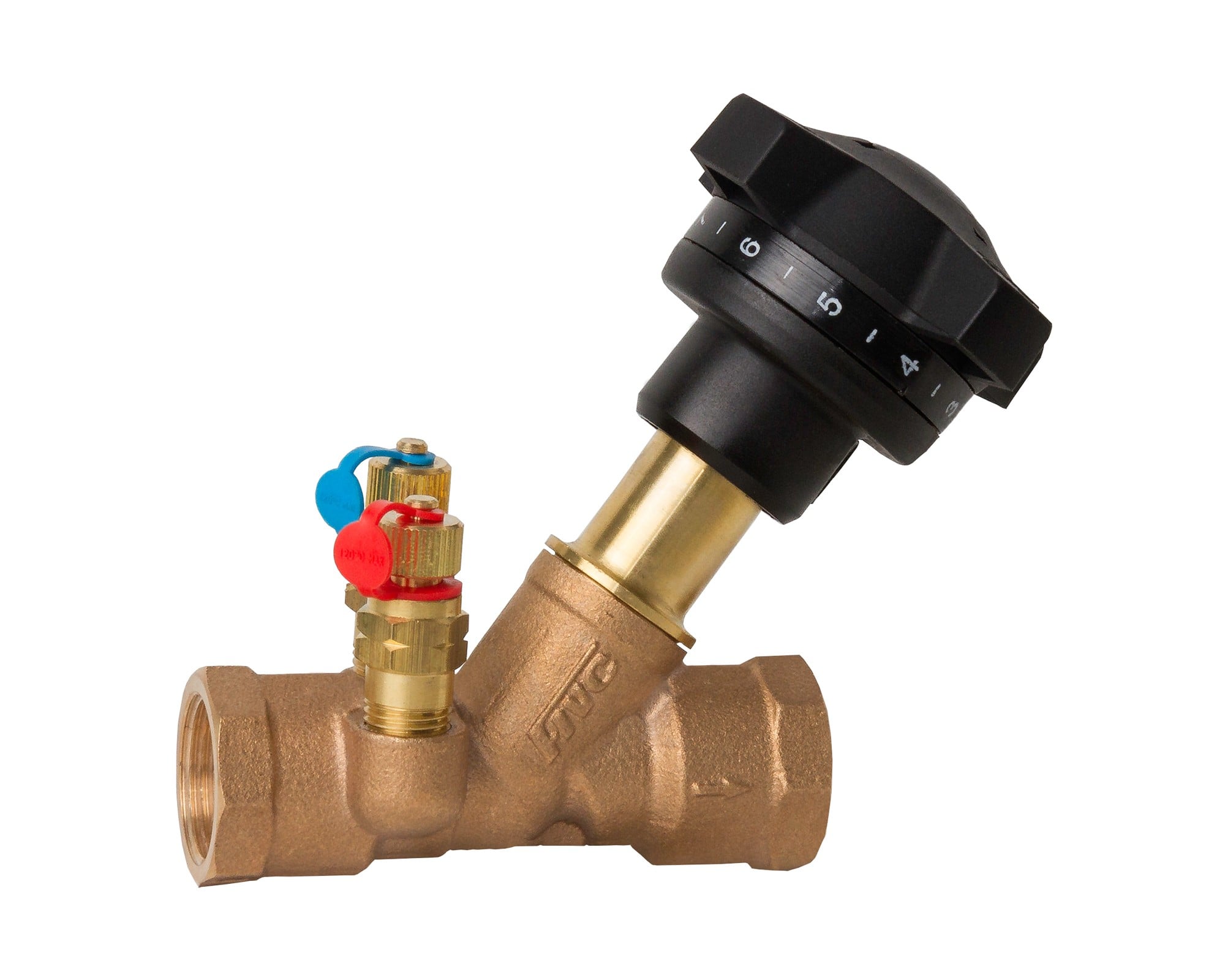VALVE SELECTION GUIDE
Choosing the right valve is crucial for ensuring years of trouble-free service and avoiding costly replacements. This guide will help you consider key factors when selecting a valve for your specific application.
Choose carefully
Several factors have direct effects on valve performance.
Hence, carefully choose the valve suitable for the application. MWP.
Key Considerations |
→ Function
→ Model, type, and shape
→ Application Environment
→ Material
→ Maximum Working Temperature (MWT) and Pressure (MWP)
→ Flowrate and size

Function
What does your application require?
Do you need a valve for:
→ Flow isolation?
→ Hydraulic media control with specific flow output?
→ Debris collection?
→ Other specialized functionality?
Model, Type and Shape
Determine which valve characteristics suit your application best
→ Consider various models, types, and shapes available
Example: FIVC Static Balancing Valves offer media control with fixed or variable orifice options • Some valves come in angle/straight configurations or with mesh-screen/perforated sheet options
Application Environment
Assess the working conditions where the valve will be installed
Consider factors like:
→ Humidity levels
→ Proximity to corrosive elements (e.g., saltwater)
→ Exposure to direct sunlight
→ Temperature extremes
Choosing the right valve for harsh environments is critical to prevent premature failure
Material
Different materials react differently to various fluids.
→ Consider the valve seat material's compatibility with your fluid
→ Review construction materials for all valve components
→ Ensure material compatibility with your application's media
Maximum Working Temperature (MWT) and Pressure (MWP)
Evaluate the operating temperature and pressure requirements.
→ Select valves rated for your system's normal operating conditions
→ Ensure chosen valves can withstand maximum system pressures and temperatures
→ Always review temperature/pressure specifications before final selection
Flow rate and size
Specify the required flow output for your application.
→ Choose the appropriate valve size based on flow rate requirements
→ Avoid undersized valves that may not function properly
→ Prevent oversized valves that can lead to energy waste and increased costs
→ Consider system design compatibility along with pressure and temperature requirements
Final Considerations
→ Evaluate how your choice impacts the valve's life expectancy, efficiency, and potential for failure
→ Ensure your selected valve meets all criteria: function, working pressure, temperature, flow rate, size, and material construction
By carefully considering these factors, you'll select a valve that provides optimal performance, longevity, and cost-effectiveness for your specific application.
Need assistance?




